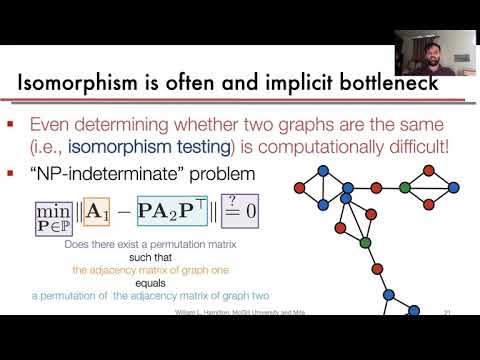Description:
Explore the fundamentals and advanced concepts of graph mining in this comprehensive 43-minute conference talk from KDD2020. Dive into the world of learning on graph-structured data, covering essential topics such as node classification, link prediction, and graph classification in real-world scenarios. Discover the rise of deep learning on graphs and understand the goal of graph representation learning. Examine key challenges in graph data and the limitations of traditional node embeddings. Investigate the transition from node embeddings to graph neural networks (GNNs) and their impact on drug repurposing and recommender systems. Delve into the connections between GNNs, graph convolutions, and Graph Fourier analysis. Learn about the Weisfeiler-Lehman algorithm and explore practical GNNs beyond the WL hierarchy. Address the challenges of message passing and gain insights into breaking its bottleneck. This talk by William L. Hamilton provides a comprehensive overview of graph mining techniques and their applications in various domains.
Read more

Graph Mining Hamilton
Add to list